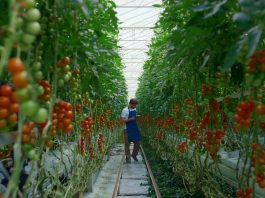New research from the VIB-UGent Centre for Plant Systems Biology has reduced nitrogen in agriculture by targeting microorganisms in soil.
Reducing nitrogen in agriculture is crucial for meeting the goals set by the European Climate Law and the European Nitrate Directive.
However, reducing greenhouse gas emissions by 2030 and lowering the use of nitrogen in agriculture poses significant challenges.
To overcome these challenges and promote sustainable agriculture, the researchers focused on targeting microogranisms in the soil, particularly bacteria and archaea, that compete with plants for nitrogen.
The work has been published in Frontiers, Trends in Microbiology, and the Journal of Environmental Management.
Nitrogen’s role in agriculture
Plants need nitrogen in the soil to grow.
However, these plants compete with microogranisms that use nitrogen in the soil. Bacteria and archaea convert nitrogen into nitrites and nitrates through a process called nitrification.
The nitrites and nitrates leach into the soil, groundwater, and recreational water, making them unusable for agricultural purposes. This negatively impacts biodiversity and water quality.
Nitrates can also be converted into nitrous oxide, a greenhouse gas.
Farmers often fertilise excessively to ensure their crops have enough nitrogen, but this has a negative impact on the environment.
How to stop nitrification
To efficiently use nitrogen in agriculture, researchers must identify substances that block nitrification by microogranisms.
When soil organisms consume less nitrogen, more is available for plants. This reduces the need for fertilisation.
The importance of archaea
The team have expanded on previous work, focusing on archaea.
“The importance of these archaea for nitrogen consumption in the soil was long ignored. Current commercial inhibitors against bacteria are not only limited, they are also ineffective against archaea,” said Dr Fabian Beeckman, postdoctoral researcher at the Beeckman lab (VIB-UGent).
“To increase the efficiency of nitrification inhibition, we looked for nitrification inhibitors against archaea.”
To identify nitrification inhibitors in archaea, the team developed two test methods. The researchers also examined nearly 50,000 molecules for their functional use.
Dr Hans Motte, project coordinator, said: “Not only have we described nitrification inhibitors for archaea, but we have also shown that a combination of inhibitors against bacteria and archaea yields the best results.”
The team believe that the result will now provide the pathway to find the best inhibitors to reduce nitrogen use in agriculture.
The shift to sustainable agricultural systems
Efficient nitrogen management is a goal under the European Nitrate Directive, underlying the researchers’ commitments to sustainability.
Currently, all nitrification inhibitors are synthetic molecules. However, with the team’s new testing methods, the search for natural nitrification inhibitors can now take shape.
Professor Tom Beeckman, group leader of the Beeckman lab, concluded: “In the next step, we can look at plants that produce and excrete these products themselves in the soil. This opens the door to more efficient organic farming and sustainable agricultural systems.”









